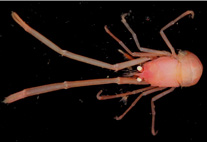Abstract
Stenodiplosis spartinae Gagné new species (Diptera: Cecidomyiidae) is described from eastern South Dakota and coastal North Carolina, and compared with other American congeners. The known host plants are Spartina alterniflora and S. pectinata. The larva is a seed predator of the ovule and immature caryopsis of the host plant. Adult activity is from the early emergence of the host inflorescence through anthesis. Oviposition occurs in the floret with eggs laid under the edges of the palea and lemma. The larva apparently overwinters in dehisced spikelets in the soil among rhizomes of S. pectinata, with pupation in late spring. Laboratory emergence and field activity of the adults suggest a potentialsecond or third generation developing on late emerging inflorescences. Larval feeding does not induce external color or shape changes in the spikelet. Apparently all three instars are ectoparasitized by Tetrastichus bromi Kostyukov (Hymenoptera: Eulophidae) that was probably introduced to North America in the late 1800’s and is inculcated into parasitoid guilds of several Stenodiplosis species. Resource partitioning appears to occur between the gall midge and early instars of Aethes spartinana Barnes and McDunnough (Lepidoptera: Tortricidae) that feed on maturing caryopses. The feeding of this gall midge and the moth probably account for most of the reduced seed production in both natural and agronomic populations of S. pectinata.

